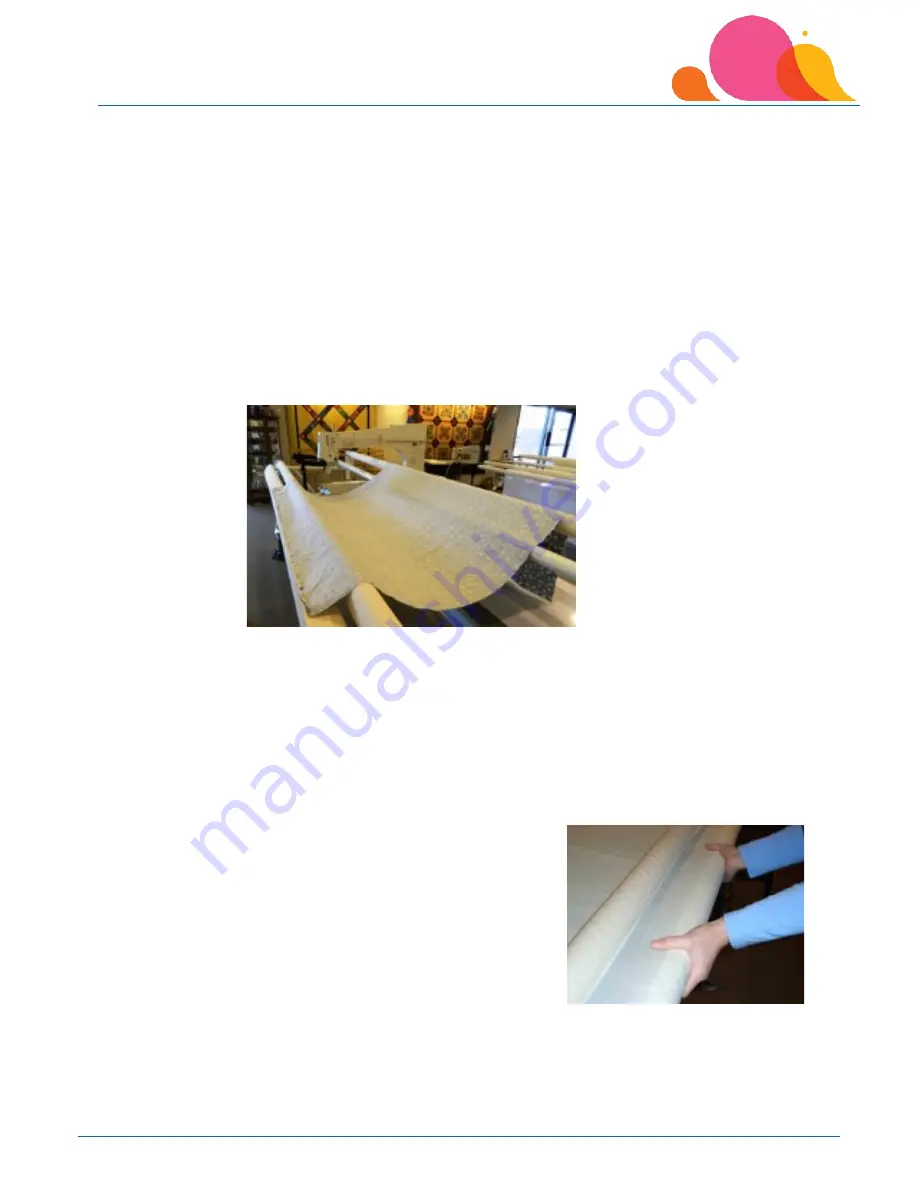
72
9-1-2022
APQS.com
Quilting Basics
Re-engage the brake. With this method, the backing fabric will eventually drape under the Quilt Top Roller,
once you start winding the backing fabric on to the Backing Roller. It doesn’t provide quite the same amount
of “smoothing” as the first option but works fine.
Check that the backing orientation will match the way you intend to pin on the quilt top (match directional
backing fabric to the top’s direction).
Stand at the needle side of your machine. Hold your backing fabric
wrong side up
. Align one of the straight edges
so that it’s parallel to your Quilt Backing Roller. Place the excess backing across the frame and over the Pick-Up
Roller on the back of the table. This will help smooth it as you wind it on the Backing Roller and will keep it off
your floor.
Align the center mark you made on the backing fabric with the center mark on your Backing Roller. Begin in the
center and align the raw edge of the backing with the raw edge of your canvas.
Start in the center of your backing fabric and pin it to the canvas center mark on your Backing Roller, keeping the
pins close but not overlapping. Position the pins about ¼-inch in from the raw edge with pins going in the same
direction. Work from the center to one end, then return to the center and pin to the other end of the fabric.
For Both Methods
Engage the brake after positioning the backing canvas in preparation for loading, then lift the brake handle slightly
so that you can turn the roller, but you still want to feel resistance from the brake. If you have not yet engaged
the brake, now engage it to apply some pressure to the roller.
Turn the Backing Roller one complete revolution until your pins are
covered. This puts the pins under the canvas so you can’t get poked.
Use your hands to smooth the canvas and pins flat, and then smooth
the backing fabric from the center out to the edges.
If you completely squared your backing and had all four sides parallel,
the edges of the backing fabric should line up as you roll. However, if
you only cut two straight edges, don’t be alarmed if the backing fabric
edges do not line up as you roll the backing on to the Backing Roller.










































